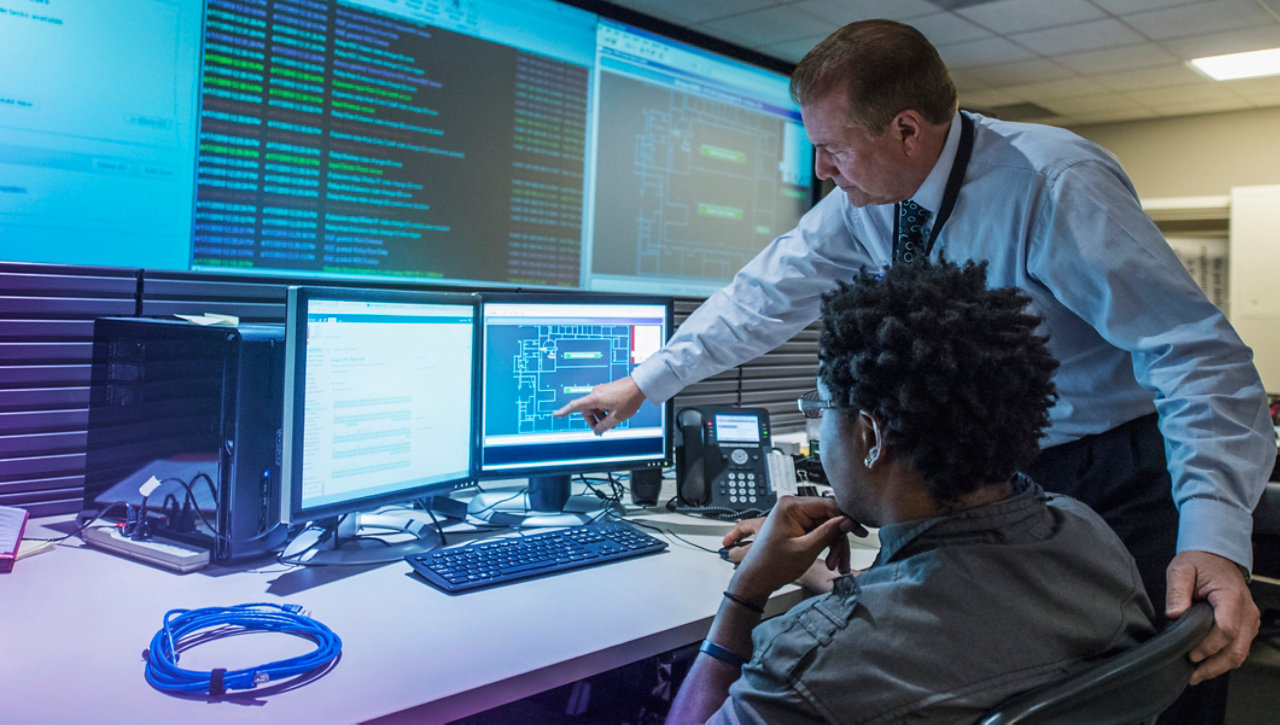With the rapid rise of tools like ChatGPT, it’s clear artificial intelligence (AI) has got many people worried, with over a third of technology employees believing their jobs are at risk from greater automation and the use of AI.
But many leading executives have a more optimistic vision – believing that AI will become a key player in helping to shape the new digital workplace and supporting the development of new collaboration tools and applications. They seem to have a growing acceptance that, in the future of work, AI and humans will need to work together to stay competitive and productive.
In fact, our joint research with Cisco found that 78% of business and IT executives now believe that AI and virtual assistant technologies will become a new colleague in the workplace supporting their employees.
How AI is already transforming employee experience
Many organisations are now starting to take an approach of ‘cognitive collaboration’. That means using AI and machine learning to enhance the experience of employees, providing them with insights and context where needed, or anticipating needs and automating processes. This helps speed up decision-making and deliver better customer interactions, there are already a number of ways in which it’s starting to be applied in the workplace.
Virtual meetings
Take virtual meetings, for example. If attendees are in a meeting room or shared space, AI can make sure the person speaking is always being picked up by the best available camera and framed appropriately, so they’re clear for everyone to see. Cutting edge AI, which is being built into products like Cisco’s Webex, now also brings a range of tools to make the overall video quality of the meeting better.
These include quality enhancements so people appear in HD even when bandwidth is low, automatically adjusting lighting when natural light is poor, and even automatic muting and camera blur when you step away from your camera to answer the door.
Audio and speech technology
AI audio and speech technology can be leveraged to filter out background noise, optimise for the user’s voice and deliver voice-activated features. Transcription capabilities have also been taken to a new level of accuracy, and real time availability of this feature allows for closed captioning, enabling those with audio impairments to be a part of the meeting. AI is also helping to break down language barriers with live translation, allowing for brilliant collaboration between global teams.
Digital assistants
Digital assistants can use AI to take pressure off human teams by carrying out repetitive tasks such as collating notes, highlights, follow ups and providing real time transcription or handling routine requests by analysing and presenting meaningful data. This frees up individuals to use their emotional intelligence to offer creative ideas, identify new possibilities and use their real-life experience.
Shifting roles
The emergence of AI text generators and natural language processing tools like ChatGPT are already highlighting how the human role could shift from creation to supervision, review, and refinement.
Our research shows that four in ten executives believe that AI and robotics will be automating dull and predictable tasks to support their employees in the future, whilst adding more human value to their organisation.
How AI is currently improving customer experience
AI is also making considerable strides in supporting customer experience (CX) – especially in the contact centre. In fact, the majority of CX professionals say AI is already helping agents and customers to enjoy better experiences. This is because AI can simplify and automate the customer journey by completing lower value and repetitive tasks, freeing up agents to focus on more complex or high value tasks.
With the rise of ChatGPT we’ve seen how quickly people have grown comfortable asking questions directly to an AI tool. In the contact centre we’re handling thousands of calls with virtual agents, which are now moving beyond tackling simple customer queries to learning customer habits and preferences, analysing natural language and behaviour in order to create a more optimised service. These sentiment analysis capabilities are now enabling more personal and contextual experiences that support agents with the right data and prompts – delivering an enhanced level of service that drives customer loyalty and improves market share.
New AI opportunities by industry
The opportunities AI technology presents can differ from industry to industry.
For example:
Unlocking new avenues across life sciences
AI technology is now fast approaching human levels of performance in restricted visual tasks. Already, it’s being used to increase diagnostic accuracy and detect different conditions during CT scans, MRI imaging and X-rays.
Streamlining recruitment for business and professional services
AI is now delivering considerable value to business and professional services organisations for quantity-based tasks like shortlisting CVs and business auditing, helping cut the time required to screen and select for a single hire down to an almost instant result.
Optimising routes for logistics
For many delivery operations, AI-based fleet management software is now using real time contextual information to control fleets and optimise routes while making product ETAs as accurate as possible.
Improving profitability for manufacturing
With its ability to analyse, learn and predict demand, AI is helping to improve efficiency and profitability of production operations while also making them more sustainable.
How are execs preparing for AI in the future workplace?
Many executives confidently expect AI and machine learning to continue to propel collaborative work and working practices forward – improving everyday working lives across a variety of different applications and industries.
In partnership with Cisco, our AI-powered collaboration solutions are already improving customer and employee experiences. Together, we spoke to 1,500 business and IT executives from global organisations across ten countries about their strategies for the future, changing workforce habits and the role new technologies will play.



